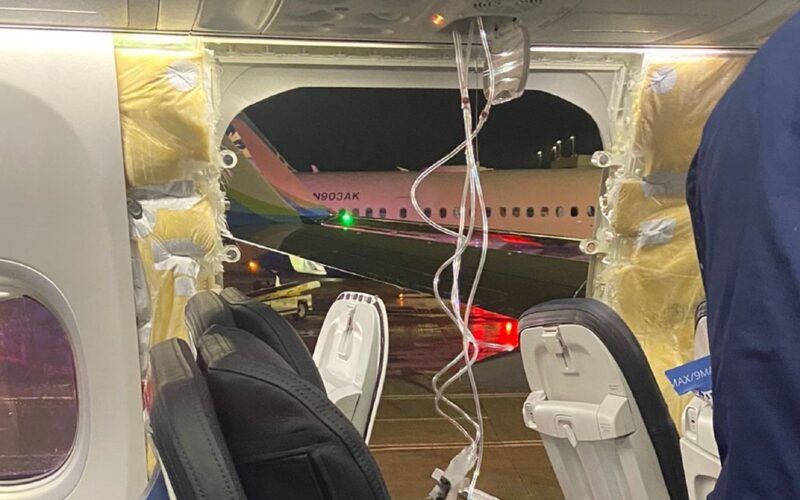The European Union Aviation Safety Agency (EASA) has confirmed that it has adopted the Federal Aviation Administration’s (FAA) Emergency Airworthiness Directive (EAD) that was issued after an Alaska Airlines 737 MAX 9 suffered a plug door blowout at 16,000 feet.
The EASA followed the FAA’s lead despite admitting that to its “knowledge, and also on the basis of statements from the FAA and Boeing, no airline in an EASA Member State currently operates an aircraft in the relevant configuration”.
The EAD issued by the FAA on January 6, 2024, requested that airlines inspect all affected aircraft before further flight resulting in 171 planes being grounded worldwide.
“The FAA is requiring immediate inspections of certain Boeing 737 MAX 9 planes before they can return to flight,” FAA Administrator Mike Whitaker said. “Safety will continue to drive our decision-making as we assist the NTSB’s investigation into Alaska Airlines Flight 1282.”
The affected aircraft covered by the FAA’s EAD were 737-9s with a plug door that can be used as an additional emergency exit when airlines choose to fly high passenger density operations.
In a statement on January 7, 2024, the EASA said that the “737-9 aircraft operating in Europe do not have this configuration and are therefore not grounded by the EAD and can continue to operate normally”.
NEW: A piece of the wall on an Alaska Airlines flight popped off mid-flight as the plane was traveling from Portland to Ontario, California.
— Collin Rugg (@CollinRugg) January 6, 2024
This is terrifying.
After about 35 minutes into the flight, the side panel of the plane came off, reportedly sucking out passengers’… pic.twitter.com/7lDTgAPF1h
The EASA added that it is in contact with the FAA and will “follow the investigation into the Alaska Airlines event closely”.
On January 6, 2024, the National Transportation Safety Board (NTSB) Chair, Jennifer Homendy, said: “We are very, very fortunate here that this didn’t end up in something more tragic […] No one was seated in 26A and 26B, where that door plug is.”
Flight AS1282 left Portland International Airport (PDX) on January 5, 2024, just after 5pm local time but shortly after takeoff a plug door separated from the aircraft and the pilot initiated an emergency landing.
Footage of the incident shared on social media showed a large section of the plane missing and passengers using emergency oxygen masks.
In its latest statement Boeing said: “Safety is our top priority, and we deeply regret the impact this event has had on our customers and their passengers. We agree with and fully support the FAA’s decision to require immediate inspections of 737-9 airplanes with the same configuration as the affected airplane. In addition, a Boeing technical team is supporting the NTSB’s investigation into last night’s event. We will remain in close contact with our regulator and customers.”

